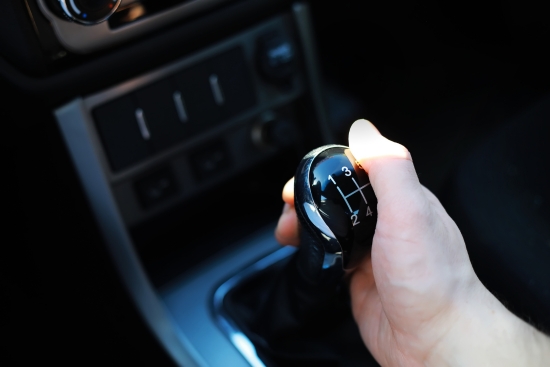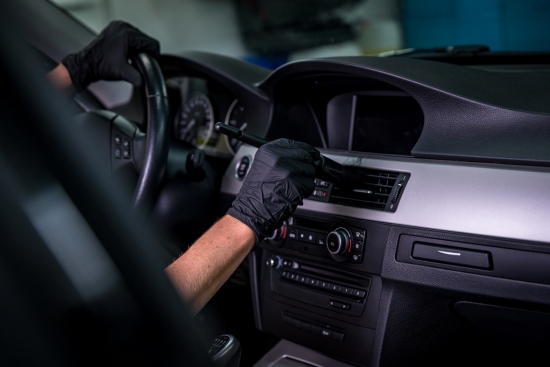Vintage car manuals offer more than insights into vehicle maintenance; they provide a window to another era when automobiles were symbols of sophistication instead of commonplace items. Service manuals not only provide step-by-step maintenance instructions but also document the continuous evolution of auto design and parts. Over time, new features are added to vehicles like seat belts, computers, and advanced body kits. When you are doing a restoration project finding the original car manual can be difficult. In this post, I wanted to share my best places to get the owner’s manual for a classic car.

Best Places to Find Owner’s Manuals for a Classic Car
Haynes
This is one of the first places I always look when I want to get the owner’s manual for a classic car. The one thing I love is that they offer you the ability to preview most manuals online for free before you purchase. Another cool feature for those that restore a lot of vehicles is a paid subscription model that allows you to pay yearly or monthly and download all the manuals you need. Check them out here.
Faxon Auto Literature
From 1902 to the present, they offer factory manuals and literature for all makes and models of cars. Factory handbooks, such as owner’s guides that come in the glove box and dealership shop manuals utilized by both home mechanics and dealerships, are the greatest literature accessible for your car. They have manuals broken down by year and model, which makes them easy to navigate. Check them out here.
Books 4 Cars
This automotive book site has a stock of over 50,000 titles. They sell the auto repair manual for every type of car, truck, motorcycle, classic car, sports car, new car, old car, collector’s dream car; you name it. You can even find race car information. The best way to use the site is to select your vehicle make from the drop-down menu. Check them out here.
Classic Car Manuals
This site sells handbooks, service manuals, motoring books, parts catalogs, and vintage brochures. This is particularly a strong site for British and European automobiles like Jags, Austin, MG, and Triumph. Check them out here.
Collectors Weekly – Vintage and Classic Car Manuals
Great site with lots of old manuals. The majority of what you find will be from American manufacturers, but there are foreign autos also. Prices range from $5 to over $200 and they direct you to their eBay page for buying. They have various types of manuals from old car manuals to manufacturer sales manuals from various eras. Check them out here.
OldCarManualsProject.com
This site takes original vehicle manuals, copies them, and sells them. The benefit is that since these are copies, they are much cheaper. The downside of course is that you don’t get the original, which is nice to have for your restoration. While I have used this site a lot, it can be difficult to navigate your way around. Check it out here.
eBay
A great place to find old car manuals is on eBay, but not as efficient as the sites listed above. You can often find entire sets of car manuals for a specific make and model, but you need to search for exactly what you need. This can be a great option if you are looking for an original manual. The downside to using eBay is that you will need to pay for shipping, and there is no guarantee that the manual will be in good condition. Check out their Collectible Books and Manuals section.
Amazon
Another option for finding old car manuals is Amazon. You can often find individual manuals as well as sets. The advantage of using Amazon is that you can often find free shipping offers and cheaper prices. The downside to using Amazon is that you will not find rare items there. I don’t usually check Amazon until I’ve struck out everywhere else, but you may find some here from folks that flip old books and manuals to sell on Amazon. Check out this section here.
Other Resources to Find an Owner’s Manual for a Classic Car
The Automobile Reference Collection at the Free Library of Philadelphia is world-renowned for its comprehensive collection of automobile owners’ manuals, technical bulletins, photographs, books, journals, advertising literature, and historic license plates. However, they just sold the entire collection!
The Simeone Foundation Automotive Museum in Southwest Philadelphia and the Antique Automobile Club of America Library (AACA) in Hershey, Pennsylvania have bought it. So to reference their collection you would need to do it through them and can no longer do it with a library card.
Digital vs. Physical Manuals: Pros and Cons
In the realm of classic car ownership, the debate between digital and physical copies of an owner’s manual often surfaces. Each format has its unique advantages, catering to different aspects of convenience and authenticity.
Benefits of Having a Physical Copy of the Manual
A physical owner’s manual is more than just a booklet; it’s a piece of history that accompanies a classic car. For enthusiasts, the tactile experience of flipping through the pages of an original manual is irreplaceable. These manuals often contain specific details about vehicle maintenance, fuel economy, and horsepower and torque ratings, which are crucial for maintaining the car’s originality and performance.
Moreover, physical manuals are immune to issues like wireless service provider’s signal strength or active data service availability. They are always accessible, regardless of vehicle availability or technological constraints. In terms of complete pricing accuracy and actual prices, physical manuals reflect the era’s standards, offering a glimpse into the automotive industry’s past practices.
For those who own rare models, such as plug in hybrid models or cars with unique ford racing performance parts, having the original manual can significantly enhance trade in value calculations, the actual trade in value and actual value of the vehicle. Additionally, the factory window sticker and vehicle warranty start date information in these manuals can be crucial for restoration and certification processes.
Advantages of Digital Manuals for Ease of Access and Storage
On the other hand, digital manuals offer unparalleled convenience and ease of access. With the advent of complimentary connected service and complimentary wireless data trial offers, accessing digital manuals has become more user-friendly. Car owners can easily search for specific information, like vehicle and accessories manufacturer’s warranty, electrical system diagrams or maintenance schedules, without having to sift through pages manually.
Digital manuals also contribute to easy to access space management, as they don’t require physical storage. They can be stored on devices like a connected mobile phone or a tablet, making them portable and easy to access on the go.
This is particularly beneficial when needing to contact emergency services or contact customer support directly; the digital manual can provide quick guidance on what steps to take.
Furthermore, digital manuals are often updated with the most up to date information, ensuring that the car owner has access to the latest advice on vehicle systems, various vehicle systems, and electric mode operation.
For owners of modern classics or electric models, this means staying informed about the latest service contracts, government fees, or financing payment calculations.
In terms of cost, digital manuals often come with no express warranty whatsoever, but they eliminate the need for monthly payments for physical manual updates. They also often include interactive features, such as tutorials and links to local ford dealers or emergency services, enhancing the overall user experience.
Both digital and physical manuals have their place in the classic car world. While physical manuals offer authenticity and a tangible connection to the car’s history, digital manuals provide ease of access, storage, and the latest information.
Ultimately, the choice between digital and physical depends on the owner’s preferences, the type of classic car owned, and the specific needs related to vehicle maintenance and usage.
Preserving and Restoring Owner’s Manuals
Owning a classic car often involves taking care of the vehicle details and its owner’s manual. This guide explains how to preserve and restore these valuable manuals, ensuring they remain a useful resource for vehicle maintenance and a cherished part of your classic car’s history.
Keeping Your Manual in Top Condition
To keep an owner manual in good shape, start by storing it in a dry, cool place. This prevents damage from moisture or heat, which can cause pages to stick together or ink to fade. If you’re dealing with a manual for a car with special features like ford racing performance parts or plug in hybrid models, taking extra care is even more important, as these manuals can be rare and valuable.
Using protective covers or sleeves is a great way to shield your manual from wear and tear. This is especially useful for manuals that include important information like the vehicle warranty start date or fuel economy specifications. A cover keeps the manual safe from spills and dirt, preserving its actual value.
Digital Backup: A Modern Preservation Technique
Creating a digital copy of your manual is a smart move. This doesn’t just mean scanning the pages; it also involves backing up the file in multiple locations. By doing this, you ensure that the information, including various warning lights explanations and vehicle’s electrical system details message and data rates, is safe even if the physical copy gets damaged.
Digital backups are also handy for quick reference. If you need to check something like the maintenance schedule or horsepower and torque ratings while on the go, you can easily access the digital copy on your connected mobile phone or other devices.
Restoring Damaged Manuals
If your manual has already suffered damage, don’t worry – there are ways to restore it. For pages that have become stuck together, carefully separating them and using a dehumidifier can help.
If the ink has faded, professional restoration services might be able to recreate the lost text, especially crucial sections like the vehicle health report or gasoline fuel efficiency guidelines.
For manuals with torn pages or bindings, book repair or restoration experts can work wonders. They can rebind the manual or even recreate a damaged cover, bringing it back to its former glory. This is particularly important for manuals of cars with unique features like electric mode operation or peak battery power specifications in electric models.
Utilizing Professional Services
Sometimes, the best option is to turn to professionals who specialize in restoring old documents. They have the skills and tools to handle delicate tasks like fixing a faded factory window sticker or a manual’s intricate wiring diagrams. These experts can also advise on the best ways to preserve the manual going forward, ensuring its longevity.
A well-preserved or restored owner’s manual is not just a tool for vehicle maintenance; it’s a piece of your classic car’s history. By taking steps to protect and restore these manuals, you maintain the complete pricing accuracy of your classic car and ensure that you have all the necessary information, like estimated monthly payment details or financing payment calculations, at your fingertips.
Whether it’s a manual for a standard model or one with ford licensed accessories, taking care of it is an essential part of classic car ownership.
Customizing and Creating Your Own Manuals
Creating a personalized owners manual classic car can be a rewarding project for any classic car enthusiast. It’s not just about having a guide; it’s about tailoring it to your specific needs and preferences. Here are some tips to help you create a manual that’s both informative and uniquely yours.
Understanding Your Classic Car’s Needs
Start by understanding the specific needs of your classic car. This includes knowing its actual mileage, maintenance requirements, and any unique features. If your car has an electric motor, for instance, the manual should include specific care instructions for it.
Gathering Essential Information
Collect all necessary information about your car. This includes the estimated selling price, net trade in amount, and any option package price if applicable. Having a clear understanding of your car’s value and the costs associated with it can be very helpful, especially if you decide to sell or trade it in the future.
Incorporating Modern Techniques
Classic cars often require special care, so it’s important to incorporate modern car care techniques into your manual. This might include recommendations for premium fuel or advice on maintaining vehicles with unique features like an electric motor.
Warranty and Technical Support
Include details about the new vehicle warranty or any FLA product limited warranty that applies to parts or services you’ve used. If you’ve ever contacted the Ford Racing Techline for technical support, include notes or tips you found helpful.
Financial Aspects
Don’t forget to include financial aspects like the outstanding prior credit balance if you’ve financed your classic car, or the estimated adjusted capitalized cost and monthly payment displayed for budgeting purposes.
Software and Connectivity
In today’s connected world, it’s useful to include a section on phone and AppLink software compatibility, especially if your classic car has been upgraded with modern technology.
Local Resources
List your local dealer and any connected service plan you have for your car. This information is invaluable for quick references and emergency situations.
Tailoring to Your Experience
Remember, not all vehicles are the same, and not all buyers have the same needs. Customize your manual to reflect your personal experience and usage of the car.
Legal and Administrative Details
Include any legal or administrative details relevant to your car, such as registration information, insurance details, and any clauses that exclude document fee or represent plan pricing.
By following these tips, you can create a comprehensive and personalized owner’s manual for your classic car, ensuring that all aspects of ownership, from maintenance to legalities, are well-documented and easily accessible.
Best Places to Find Owner’s Manuals for a Classic Car – Conclusion
Old car manuals are a great resource for anyone interested in vintage or classic cars restoration. There are a few different places to find old car manuals, including online retailers, auction sites, and automotive museums.
While old car manuals can be difficult to find, they are well worth the effort for anyone interested in restoring or maintaining a classic car.





